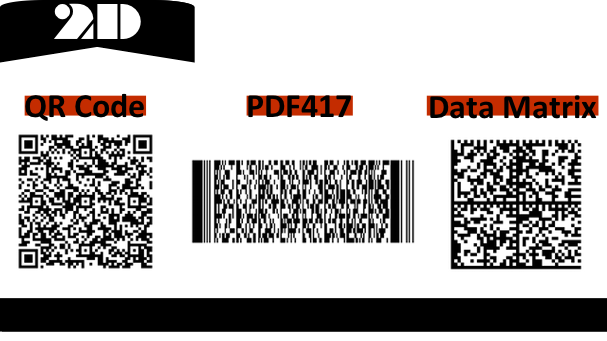The Most Popular 2D Barcodes for Document Information Capture |
| By Rachel Jia |
|
|
 Barcode technology was created in the 1940s and has really taken off in adoption rates ever since the 1970s. Today, it’s widely used in industries like retail, transportation, healthcare, logistics, public security and automated production. As technology in general has continued its evolution, the original single dimension (1D)—or linear—barcode no longer truly meets most organizations' requirements. This is due to its limited character capacity—or the limited information it can hold. It also has a heavy dependency on a database and network. Thus, along came the two-dimensional (2D) barcode. Having everything a 1D barcode could muster, the 2D barcode also brought about advanced features. It offered much higher data density, error correction and encryption technology, and it can encode images and multiple types of characters. Three 2D barcode types are arguably now the most popular. They are the Quick Response (QR) code, PDF417 and Data Matrix. Each of these provide their own advantages. As a result, each are used for varying purposes.  QR code The QR code is a type of matrix barcode. These are the ones you see nowadays with a series of black and white cells rather than the more familiar black lines or bars. They really rose in popularity with mobile devices. It was initially developed by Toyota subsidiary Denso in September 1994. It’s currently defined in the standard International Organization for Standardization(ISO)/The International Electrotechnical Commission (IEC) 18004. The QR code was designed to allow high-speed component scanning. A charge-coupled device (CCD) barcode reader can decode up to 30 QR codes per second with up to 100 characters in each barcode. The QR code has full (360 degrees) reading features. Each QR code has three finder patterns located in three corners of the QR code. A CCD reading device can detect and decode the position of the barcode, the size of the barcode and the size of the inclination angle. This barcode type has a high data density. It can encode 1,817 Chinese characters, 7,089 numbers or 4,296 English letters. It has four levels of error correction. Even if a QR code is damaged or broken, it can often still be read correctly. Today, QR codes have become common in areas such as consumer advertising, code payments, website logins and for data encryption, amongst others. PDF417 The PDF417 barcode is a type of stacked linear barcode. Symbol Technologies was said to have developed this barcode type back in 1991. Today, it is represented by ISO standard 15438. Each PDF417 barcode consists of three to 90 rows, and a single row is essentially the equivalent of a small 1D barcode. PDF417 specifies that each pattern in the code consists of four bars and spaces, and each pattern is to be 17 units long. This is how we get the “417” part of the name. The PDF417 barcode type is mainly used in transportation, identification cards and inventory management. Most states in America use PDF417 to encode drivers’ key information on the back side of driver licenses. Data Matrix Third on our list is the Data Matrix barcode type. This type of barcode is also a two-dimensional matrix barcode. It first came about in 1994, and today, it is represented by the standard ISO/IEC 16022. The Data Matrix barcode, especially the latest ECC200 version, supports advanced encoding error checking and correction algorithms. This allows the recognition of barcodes that are up to 60% damaged. So, it’s commonly used on items where barcodes get easily damaged due to high heat, chemical exposure, etc. So, Data Matrix barcodes are used in electrical rating plates, surgical instruments, circuit boards and the like. Data Matrix barcodes are adaptable in size. The symbol size can be as small as 2.5mm, which is the smallest among all 2D barcodes. So the most popular application for Data Matrix is labeling small items, for example, small electronic components and pill bottles. Meanwhile, the size and the encoded data capacity is independent. This allows the choosing of a lot of different matrix sizes. It’s undeniable today that barcode technology is a critical consideration for any document management strategy. In other words, whether or not you end up adopting barcodes, at the very least today, they must be a serious consideration. With continued growth in mobile device use across every industry, this consideration is only more paramount. Barcode technology has allowed many industries to successfully adapt to technological advances and will continue to do so for the foreseeable future. Rachel Jia is currently technical marketing manager at Dynamsoft, a provider of web and desktop image capture and barcode reader software development kits. In addition to her marketing experience, she also has six years of customer service and technical support experience. This includes having worked on technical imaging and document management requirements of customers from different industries, including healthcare, finance, government and more. Follow her on Twitter @Rachel_Jia. |
